“What’s in a name? That which we call a rose
By any other name would smell as sweet.”
– William Shakespeare
“Not if you called them stench blossoms.”
“Or crapweeds.”
– The Simpsons
While I suggest a universal definition of “video game,” or “videogame” and “video-game” as some people spell it, the main purpose of this post is to make explicit my own definition of the term. I will gloss over the contentious definition of the word “game” itself. Wittgenstein famously spilled a lot of ink on the subject, deciding any attempt at a concrete definition that will encompass everything people call a “game” is doomed to failure.
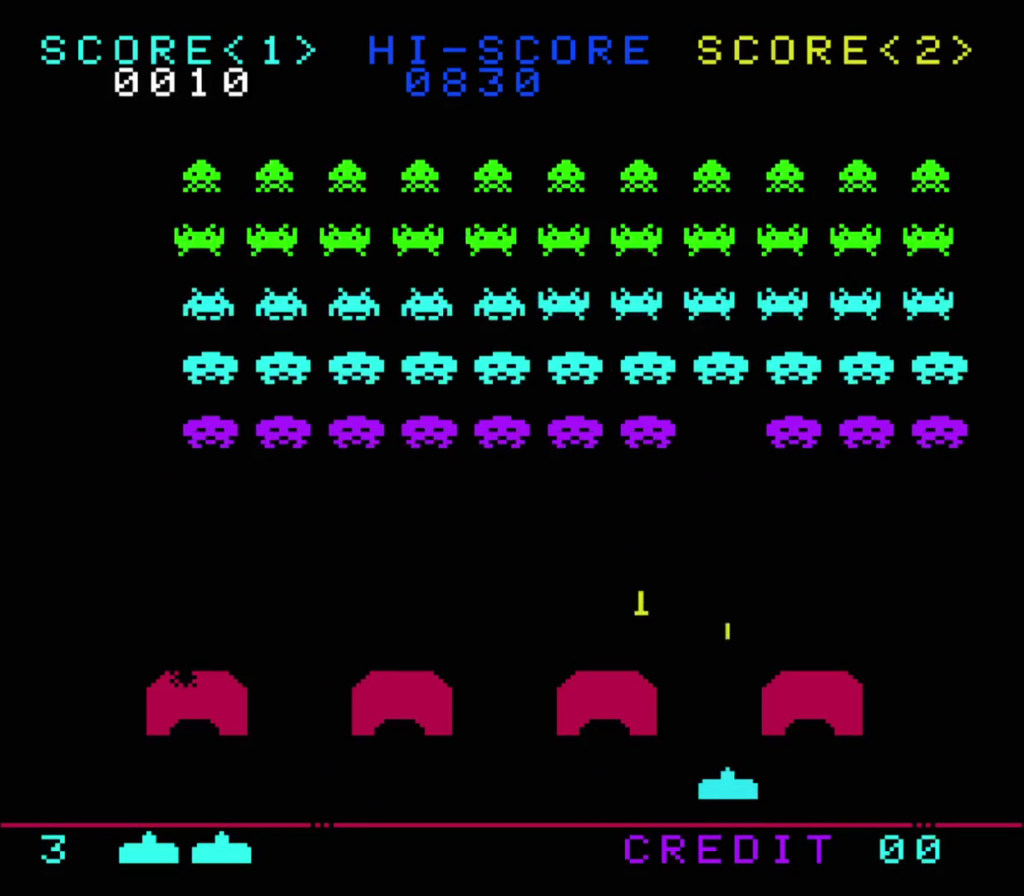
In my usage, a “video game” is not necessarily a “game.” It does not necessarily even involve “video.” A certain friend of mine maintains the original Zork is a video game even though it has no “video” but only text. A term like “computer game” refers strictly to video games on home computers, such as Windows desktops, as opposed to video games on consoles and handhelds, such as the Nintendo Wii or Nintendo DS, even though, technically, every video game console and handheld is also a computer. Similarly, an “arcade game” is a video game in an arcade machine or a port of such a game. Dig Dug is an arcade game inside an arcade machine but, ported to another system, is still an arcade game. A sequel to Dig Dug such as Dig Dug: Digging Strike that was designed and released, in this example, on a portable handheld is not an arcade game. A “mobile game” is much the same: a video game released for a mobile, such as an iPhone. I avoid the term “gaming” for two reasons: it seems unnecessary, fulfilling no purpose “video game” or “video games” does not, and its predicate is “gamer,” a word that, after Gamergate, should be relegated to the dustbin.
Certain individuals stick up their noses at some video games, saying “this isn’t a game” as a form of dismissal. I do not say “this might not be a game” negatively but rather as a neutral description. There is room enough in video games for Dark Souls, Wii Sports, and Depression Quest. To quote YouTube channel Games As Literature on the subject of video games arguably not being games: “At absolute worst, this means that the medium’s name isn’t 100 percent accurate to each of its works, and that’s just really not a problem at all. We simply have an art form called video games that, over time and development, have expanded to more than the original concept was.”
Some would define “game” to include all “video games,” a valid position. But I prefer not to strictly define “game.” The rulesets of tennis or pachisi or Dungeons and Dragons mark them as games, but as Wittgenstein observed, language also follows a ruleset. He theorized that language, too, should be understood as a game. As with “art,” the definition of “game” is best descriptive rather than prescriptive: if people agree something is a game, it is, whatever qualities tennis and Dungeons and Dragons do or do not share.

Even accepting a broader definition of “game,” to treat “video games” as a digital extension or continuation of what one might call “analogue games” such as tennis or pachisi is a mistake. The video game is an artistic medium as the novel or the film is. Of course, some analogue games also have aesthetic and artistic considerations. Chess is highly abstracted medieval warfare. Lizzie Magie invented Monopoly as anti-landlord satire. (Monopoly is even artistic enough that we italicize its name!) Yet, while tennis and pachisi and Monopoly might be games, they are entirely outside the artistic medium of video games (except for video game adaptations).
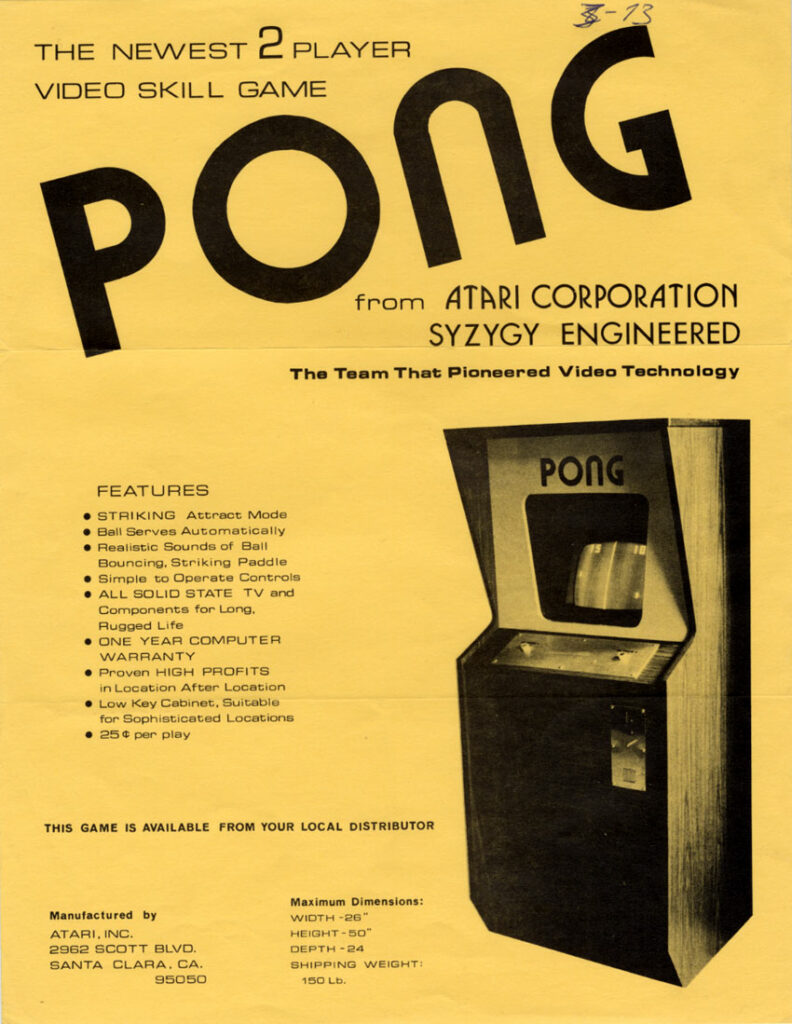
The “game” in “video game” originates from the historical circumstances in which video games arose. Allan Alcorn’s Pong, though not the first video game (that would probably be something from the 1950s), represents the mode of the earliest video games. It is a digital simulation of tennis pared down and abstracted to the essentials. There is a clear win state and lose state and no ending aside from one side losing and the other winning.
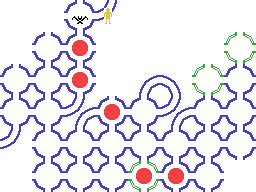
From early on, however, developers created video games that cannot be identified as simulations of analogue games. For example, Gregory Yob’s Hunt the Wumpus puts the player in command of a character who must navigate a cave system to slay the titular Wumpus, a yeti-like monster. In Nishikado Tomohiro’s Space Invaders, the player pilots a space ship shooting down alien monsters. In Heiankyō Alien, a predecessor to Pac-Man and Lode Runner, the player controls a medieval policeman who must protect the capital of Japan from man-eating aliens, this time already landed on Earth. While such video games do not simulate “analogue games,” they remain games in the style of Pong or tennis or pachisi. This is to say that they follow rulesets with a clear win and lose state. In them, the player’s performance is based on skill, reflexes, and experience with the ruleset. Notably, Space Invaders and Heiankyō Alien have no endings aside from dying after the computer becomes too fast for the player to handle. The player wins until they lose. The point is not to create a world to explore or a story to play a role in but to test skill as measured in numerical scores, even if a fictional world contextualizes the action. In this context, it is reasonable to understand these video games as games in the same vein as tennis or pachisi.
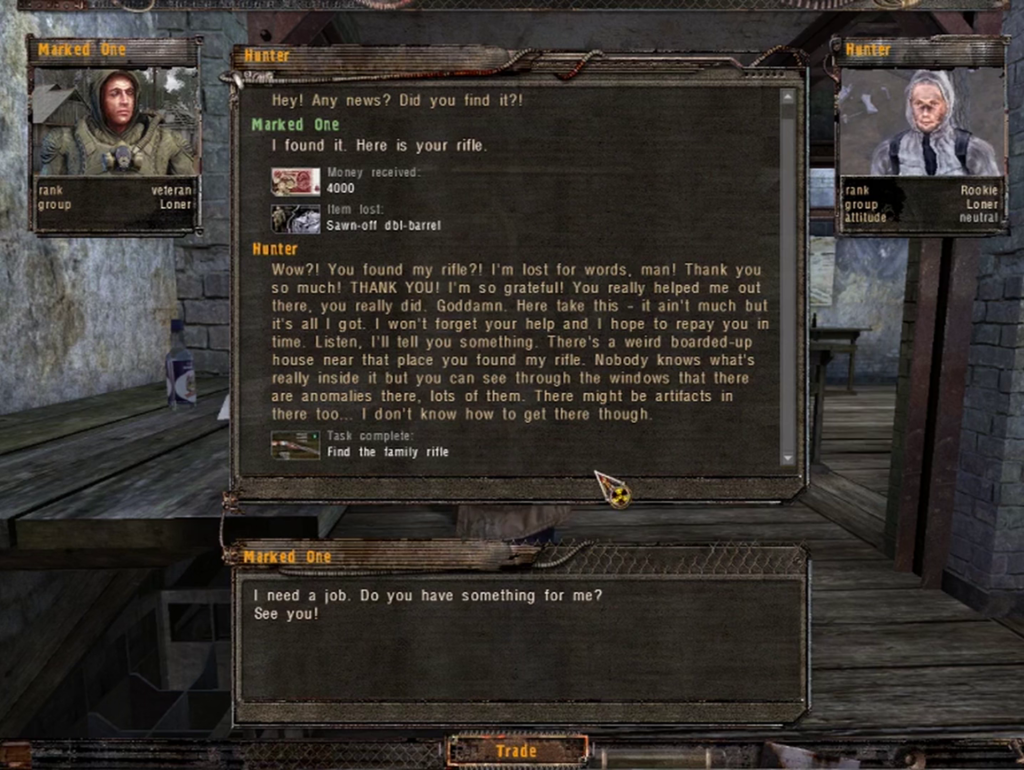
As video games became more complex, many, perhaps most, continued following this basic framework, but they also moved away from formally pure, straightforward rulesets and into tremendously more intricate mechanics and narrative components. Often developers are less concerned with scores and more with constructing verisimilitudinous worlds to explore, creating memorable characters to interact with, or using mechanics to convey a narrative. For example, S.T.A.L.K.E.R.: Shadow of Chernobyl features an open world, dozens of characters, multiple endings, and many places and missions for the player to experience. Most especially, it features many exhausting gunfights. But gameplay remains tied to player skill and reflexes. There is a lose state—death—and a win state—reaching an ending. The lose state, however, does not end the game. It is more like a mistake in the story. As an actor who flubs a line may retry the performance, the player who dies will try to overcome the specific challenge again. The far stronger emphasis on narrative, character, and setting in “role-playing games” like this, derived, as the designation implies, from tabletop RPGs instead of simpler rulesets like tennis or pachisi, puts video games like S.T.A.L.K.E.R. or Daggerfall into a category apart from video games like Pong. Some video games with hypothetically similar “RPG elements,” such as Dragon Quest, have scarcely more narrative than Space Invaders and thus, being little aside from pure rulesets like Pong, fit in better in the analogue game lineage.
Furthermore, S.T.A.L.K.E.R. is a specific variety of RPG, an “immersive sim,” yet another genre whose systems are defined not by abstract rulesets like EXP and HP, though these might be present, but through attempted simulations of alternate realities with features such as day and night, armor degradation, and NPCs actively carrying out their own schedules and quests.
Certainly by 2Certainly by 2007 the “game” lineage of video games had been complicated. Tennis has no character arcs and no narrative context for the action. Pachisi has no setting and no detailed backstory for the player. To discuss “the protagonist of pachisi” or “the themes of tennis” would be ridiculous. To discuss “the protagonist of S.T.A.L.K.E.R.” or “the themes of S.T.A.L.K.E.R.” would not. Whoever created tennis or pachisi did not have to know programming and did not consider sound design, storytelling, or artwork. Alcorn likely did not consider these elements when creating Pong. To set S.T.A.L.K.E.R. alongside tennis or pachisi feels stranger than to set Pong alongside the same games. Even Pong, if only retrospectively, is not a continuation of the analogue games, or not only a continuation of them, but an early creation in an interactive digital medium. This issue does not occur in other artistic mediums. Compare Oroonoko (1688) to The Hunger Games (2008). Centuries divide them, yet both are obviously novels with recognizable settings, characters, themes, dialogue, paragraphs, and so on. Are S.T.A.L.K.E.R. and tennis and pachisi obviously the same medium? Of course not! They are not the same medium at all.
There is another branch of video game development that moved even further from tennis or pachisi, a realm without the win and lose states or dependency on skill, reflexes, and experience: the adventure game. As Hunt the Wumpus demonstrates, adventure games have existed for almost the entire duration of video game history, though some might argue Wumpus is a puzzle game. The name of the adventure game genre stems from Will Crowther’s Colossal Cave Adventure and, later, Warren Robinett’s Adventure. Colossal Cave Adventure and Adventure have rulesets with skill-based challenges and win states and lose states. The win states are definitive endings: finding the treasure and escaping the caves and the castles, respectively. No longer is the goal simply a high score for the sake of it but instead reaching the end of a narrative that the score represents.
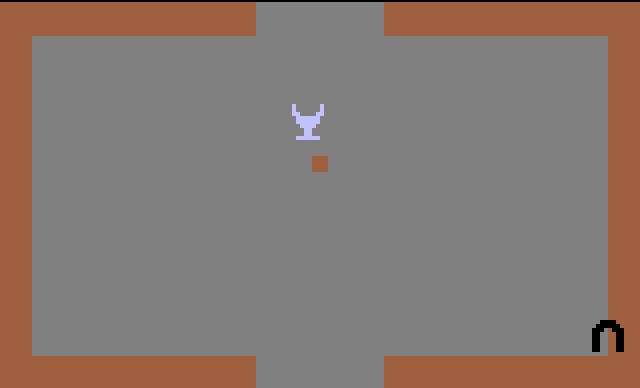
Developers iterated on the idea of exploring a contiguous world to gather items and solve puzzles in service to a plot until eventually the lose state and demand for (arcade) skill and reflexes vanished, as in The Portopia Serial Murder Case and Myst. Later, particularly in Japan, the items and puzzles withered away until only selecting actions in a plot remained, as in Chunsoft’s Machi. Some adventure games lack puzzles, a plot, or a lose state, such as Kikiyama’s Yume Nikki. More recently, even win states have vanished, as in The Stanley Parable or numerous small projects such as girl software’s Rainforest Forever or erbridge’s Forest Walk. Many of these are called “games” only as an accident of the evolution of the genre away from Colossal Cave Adventure, an adventure game, perhaps, but closer to a “game” in the manner that Pong is a game.
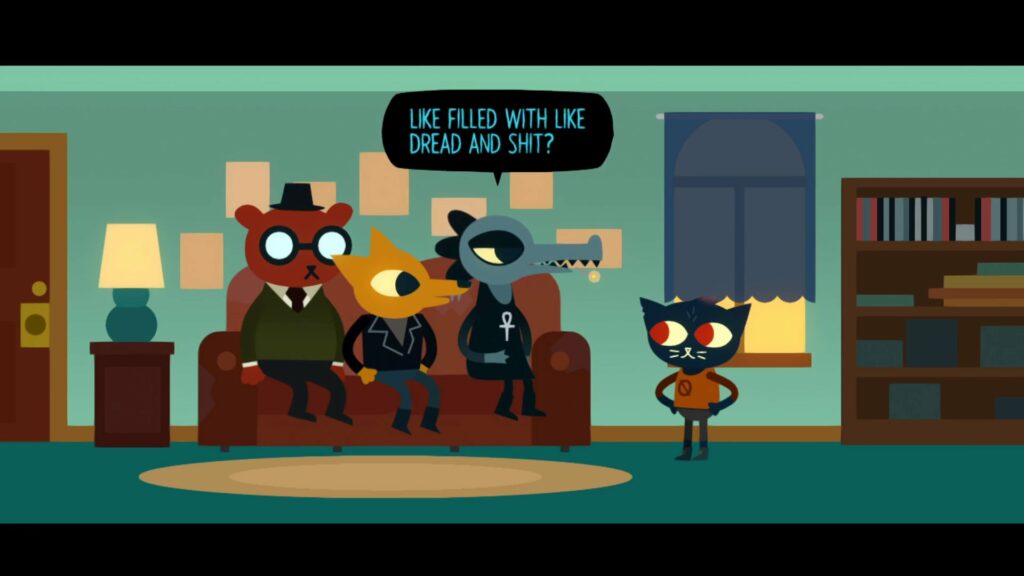
Many adventure games retain lose states in the form of deaths and bad endings, and many include tests of “arcade skill,” in other words tests of skill and reflexes within a given ruleset. But to treat The Portopia Serial Murder Case, Myst, Night in the Woods, Dujanah, and many other respected video games as “games” in the manner of tennis or pachisi or Pong is just wrong. What does Night in the Woods owe to tennis or pachisi or Pong? What does it meaningfully have in common with, say, Bungie’s Destiny? Night in the Woods is considered a “game” because, by a quirk of historical development, that is the common term for this variety of digital media: “adventure games.”
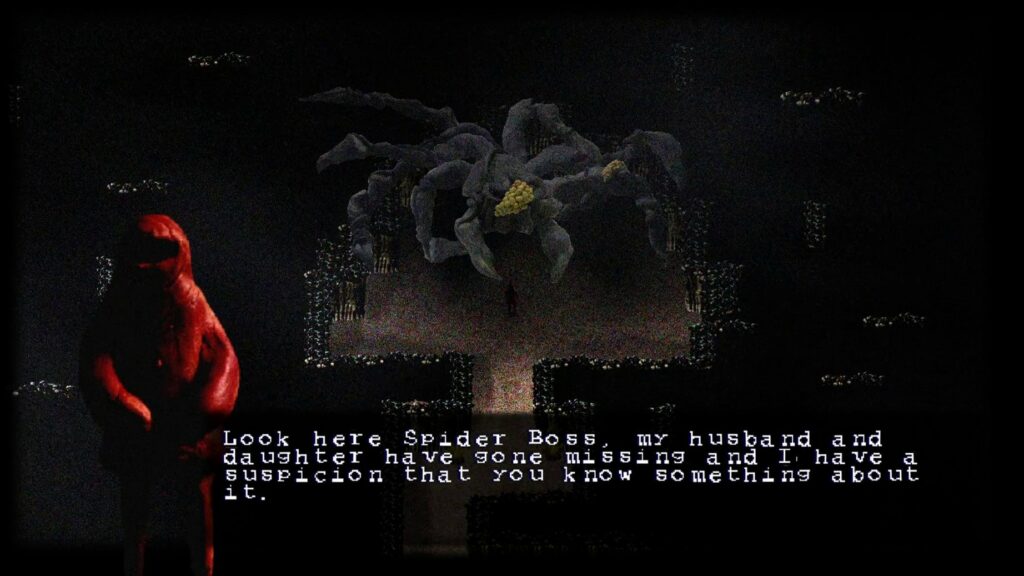
In conclusion, I consider a “video game” to be any form of interactive digital media that primarily serves as entertainment. So, for example, I do not consider Microsoft Word to be a video game because, as software, it is pure utility. An entertainment purpose does not imply frivolity or shallowness. The term “video game” is simply an accident of historical development. A “video game” is not necessarily a “game.” Hunt the Wumpus, The Portopia Serial Muder Case, Super Mario Bros., Puyo Puyo, Doom, Machi, Pokémon Trozei!, The Cheetah Girls: Passport to Stardom, Professor Layton and the Diabolical Box, They Bleed Pixels, The Stanley Parable, Sonicomi, and Dujanah are all video games. These are radically different video games ensconced in their own niches and contexts, but that diversity removes these digital media’s “video game” status no more than the gulfs between Oroonoko, Exploits and Opinions of Dr. Faustroll, Finnegans Wake, Things Fall Apart, Sozaboy, and Kamikaze Girls mean they are not all novels.
Relatedly, the use of “play” as the primary verb for describing interaction with video games strikes me as unusual. There is no doubt that one “plays” Pong or Puyo Puyo or Doom. But to say “I am playing The Silver Case” feels strange. The Silver Case consists primarily of reading text. But to say “I am reading The Silver Case” feels even more wrong, though the “gameplay” is nothing beyond occasionally walking short distances and solving puzzles. A video game like Variable State’s Virginia has a degree of gameplay — walking around and occasionally clicking on things or characters. But is this “playing”? While to play a video game is, clearly, not a piece of skilled labor demanding talent and training, it seems the “play” involved in a video game like Virginia or The Silver Case is more akin to the “play” of actors putting on a performance. That is, it is more about assuming the mentality of a certain role in a certain story rather than “winning” or taking the actions one would personally take in a comparable situation. This is the “play” of a true “role playing game,” the legacy of the tabletop RPGs from which the narrative tradition in video games partially originates. The interactivity of a video game is perhaps more akin to inviting the player to put on a little play for themself. This is in contrast to developers’ and critics’ kneejerk and misguided tendency to liken video games to films. This use of “play” is still unsatisfying to me and rather pretentious but at least makes sense contextualized in this way.
I prefer not to use “game” as a shorthand for “video game” because “game” is less inclusive. If I call Night in the Woods just a “game,” I believe I would suggest a kinship with tennis or pachisi or Pong that does not exist, even as, further complicating the situation, Night in the Woods includes an arcade-style video game inside it called Demontower. Sometimes, I do use “game” instead of “video game,” usually only to declutter sentences after already establishing that I am describing a “video game.” But I try to structure my writing so as to avoid this (minor) shortcoming.

There are, I acknowledge, borderline cases. For example, Kid Pix is an art program for children full of novelty sound effects and animations. More an entertainment program, Kid Pix is hardly utilitarian art software like Clip Studio Paint. Yet is Kid Pix really a video game? Mario Paint is similar, except that it houses an indisputable video game called Gnat Attack. Dmitry Hrabrov’s Winter Novel lacks any player choice or interactivity beyond advancing through dialogue until the ending. Is it a video game or a digital comic? Pol Clarissou’s to west lacks any interactivity beyond being turned on and off and slightly adjusting the camera. My gut instinct is not to consider any of these borderline cases video games but instead “art software” in one sense or another. However, outside of science, a fuzzy conceptual boundary is welcome. It encourages innovation and exploration. A rigid definition would only become rapidly outmoded. To spark thought and discussion is the goal. I encourage everyone to embrace this creative diversity and the potentialities of the undefined edge, what Yoko Taro, in the lecture “Making Weird Games For Weird People,” called the invisible wall around what is expected.
